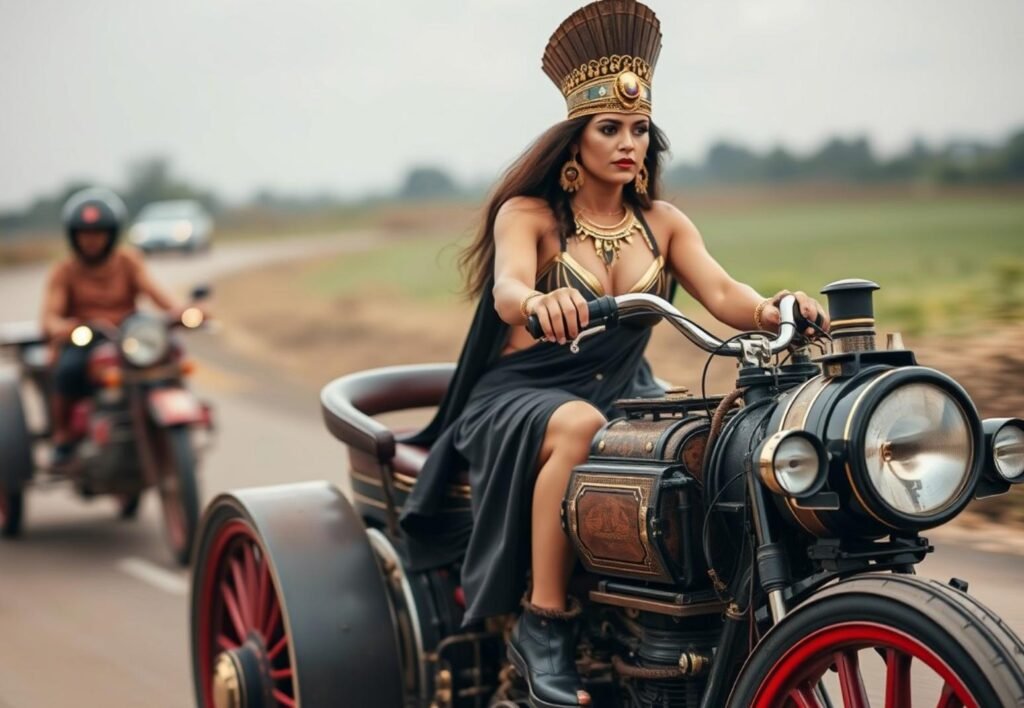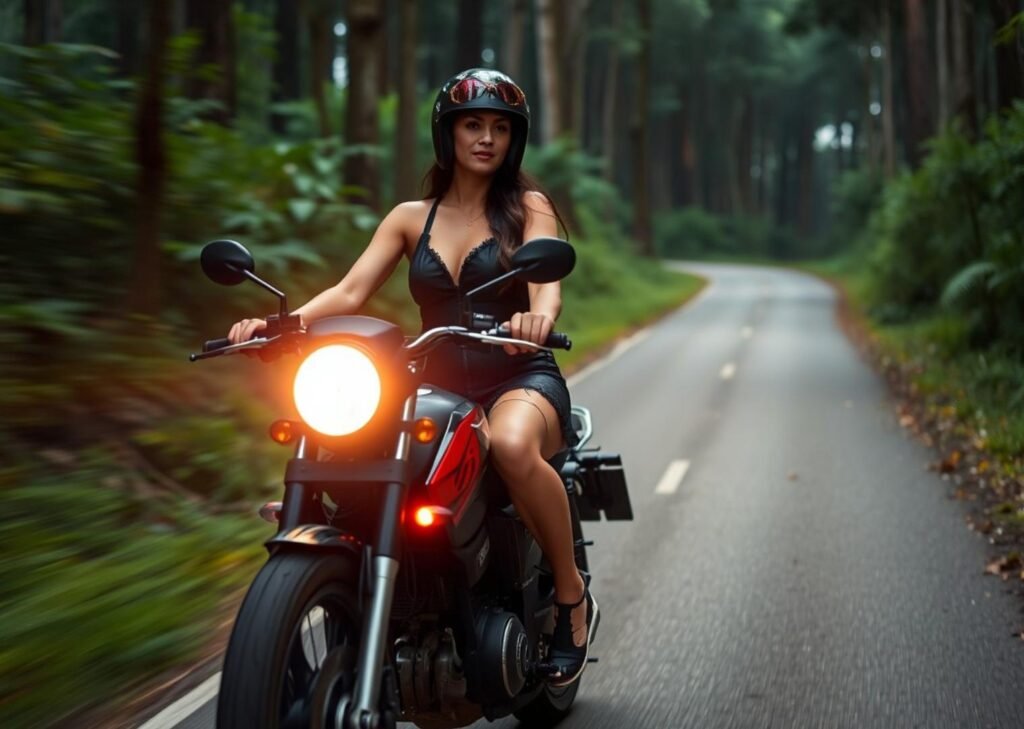Motorcycles have been a symbol of freedom, speed, and innovation since their inception. Over the decades, they have evolved from simple steam-powered contraptions to high-tech machines driven by electric motors. This article explores the fascinating evolution of motorcycles, highlighting key milestones and innovations that have shaped the industry.
The Birth of Motorcycles
Early Experiments with Steam Power
The journey of motorcycles began in 1867 when Sylvester H. Roper created the “Steam Velocipede,” a steam-powered two-wheeled vehicle. While rudimentary in design, it laid the groundwork for future motorized transportation.

The First Internal Combustion Motorcycle
In 1885, Gottlieb Daimler and Wilhelm Maybach introduced the Daimler Reitwagen, widely regarded as the first true motorcycle. It featured a single-cylinder internal combustion engine powered by petroleum, setting a standard for future designs.
The Early 20th Century: Mass Production and Innovation
Indian Motorcycle Company
The Indian Motorcycle Company was founded in 1901, producing its first model and becoming America’s first motorcycle manufacturer. By focusing on performance and reliability, Indian quickly gained popularity among riders.
Harley-Davidson’s Entry
In 1903, Harley-Davidson was established in Milwaukee, Wisconsin. Their early models featured small 116cc engines but were celebrated for their durability and craftsmanship. Harley-Davidson soon became a global icon in the motorcycle world.

Technological Advancements
By 1914, motorcycles saw significant improvements, including the introduction of clutch systems and multi-speed gearboxes. These innovations made motorcycles more versatile and rider-friendly, further boosting their appeal.
The Interwar Years: Engineering Progress
BMW’s Boxer Engine
In 1923, BMW unveiled the R32, its first motorcycle featuring a flat-twin “boxer” engine. This engine configuration became synonymous with BMW motorcycles due to its balance and efficiency.
Supercharged Racing Bikes
During the 1930s, supercharged engines dominated racing circuits. These motorcycles not only achieved higher speeds but also showcased advancements in aerodynamics and engineering precision.
Post-War Era: Accessibility and Design
Vespa Revolutionizes Scooters
After World War II, Piaggio introduced the Vespa scooter in 1946. Lightweight, affordable, and stylish, it became a symbol of post-war mobility, particularly in Europe.
Honda Joins the Race
In 1949, Honda launched its first production motorcycle, the Dream D-Type. With its affordable price and user-friendly design, Honda began its journey toward becoming a market leader in the global motorcycle industry.
The Rise of Superbikes in the 1950s–1960s
Triumph Bonneville
Introduced in 1959, the Triumph Bonneville T120 became one of the most iconic motorcycles of all time. Known for its speed and elegant design, it was particularly popular among enthusiasts seeking performance and style.
Honda CB750: The First Superbike
In 1969, Honda introduced the CB750, often referred to as the world’s first superbike. With features like a four-cylinder engine and front disc brakes, it set new benchmarks for performance and affordability.
The 1970s–1980s: Power and Safety Take Center Stage
Kawasaki Z1
The launch of the Kawasaki Z1 in 1974 marked a turning point in performance-oriented motorcycles. Powered by a 903cc engine, it was considered one of the fastest bikes of its time.
Harley-Davidson Evolution Engine
In 1984, Harley-Davidson released its Evolution Engine (Evo), offering improved power output, reliability, and fuel efficiency. This innovation helped Harley-Davidson maintain its dominance in the industry.
ABS Technology Introduced
BMW took a leap forward in safety by introducing anti-lock braking systems (ABS) for motorcycles in 1987. This innovation significantly reduced accidents caused by sudden braking or slippery conditions.
The 1990s–2000s: High-Tech Motorcycles
Ducati 916: A Design Masterpiece
The launch of the Ducati 916 in 1994 redefined sportbike aesthetics and performance standards. Its aggressive design and powerful engine made it an instant classic among motorcycle enthusiasts.
Suzuki Hayabusa: Speed Redefined
In 1999, Suzuki introduced the Hayabusa GSX1300R, which became the world’s fastest production motorcycle at over 190 mph. Its aerodynamic design and unmatched speed earned it a cult following.
Emergence of Electric Motorcycles
The early 2000s saw the rise of companies like Zero Motorcycles, which began exploring electric-powered two-wheelers. These bikes focused on sustainability without compromising performance, signaling a shift toward eco-friendly transportation.
The 2010s–2020s: Smart and Sustainable Motorcycles
Harley-Davidson LiveWire
In 2014, Harley-Davidson released its first electric motorcycle prototype, the LiveWire. This marked the company’s foray into renewable energy solutions while retaining its iconic brand identity.

Advanced Rider Assistance Systems (ARAS)
By the late 2010s, motorcycle manufacturers began integrating advanced technologies like rider-assistance systems, smartphone connectivity, and AI features to improve safety and convenience for riders.
Electric Motorcycles Dominate
As of 2023, electric motorcycles have gained widespread acceptance globally, with brands like BMW, Ducati, and Yamaha launching high-performance electric models that cater to both urban commuters and adventure seekers alike.
Frequently Asked Questions
What Was the First Motorcycle Ever Made?
The Daimler Reitwagen, developed by Gottlieb Daimler and Wilhelm Maybach in 1885, is considered the first motorcycle powered by an internal combustion engine.
Why Are Electric Motorcycles Becoming Popular?
Electric motorcycles are gaining popularity due to their environmental benefits, lower running costs, and advancements in battery technology that offer improved range and performance.
Which Motorcycles Are Considered Superbikes?
Models like the Honda CB750, Ducati Panigale V4, and Suzuki Hayabusa are often classified as superbikes due to their high performance, advanced technology, and racing pedigree.
Conclusion
The evolution of motorcycles is a testament to human ingenuity and our desire for speed, freedom, and innovation. From steam-powered prototypes to cutting-edge electric machines, each era has brought groundbreaking developments that have shaped how we ride today. Whether you’re a casual rider or an avid enthusiast, understanding this history enhances your appreciation for these incredible machines.
Start exploring motorcycles today—whether vintage classics or modern electric marvels—and become part of this ever-evolving story!
